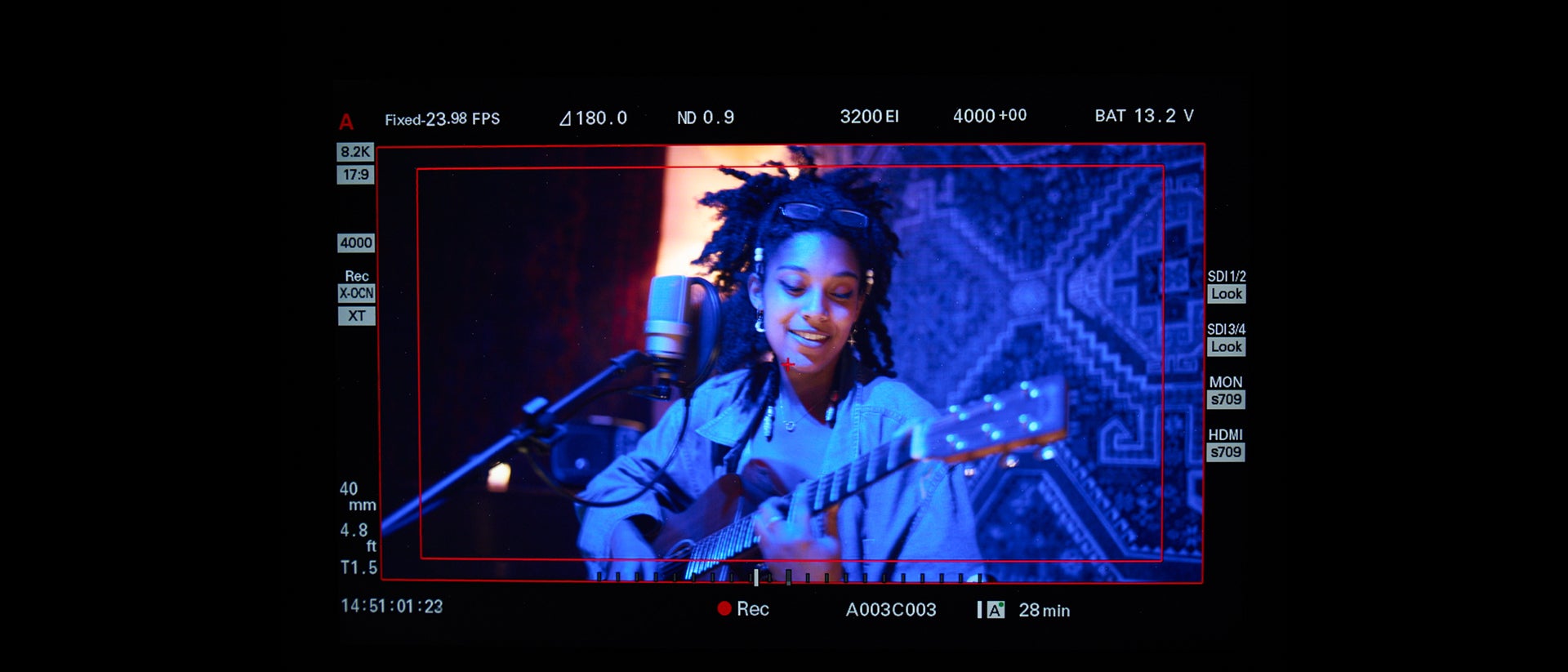
02-24-2022 - Case Study, Gear, Technology
A Roundtable Discussion with Steven Bernstein, ASC, Gonzalo Amat, ASC, and Colorist Patrick Woodard of Point.360 – Part 2
By:
SonyCine.com is privileged to feature a roundtable discussion conducted by Steven Bernstein, ASC, with Gonzalo Amat, ASC and Patrick Woodard, colorist. Amat recently shot one of the first films on the new VENICE 2 motion picture camera titled, Take Me, embedded below. It was color graded by Woodard.
This is Part 2 of 2. Part 1 can be found HERE.
Steven Bernstein:
Let’s talk about highlights and over-exposure. How does digital work with that?
Gonzalo Amat:
For me, based on how I see it, it is where I also base my shadow exposure. With someone in a dark space, you'll still see their face because your eyes will adapt—the same thing with highlights. The eye doesn't just let highlights burn out. You always have some detail. So, I preserve highlights as much as possible by putting them right at the edge of the latitude of the camera's chip. I maintain some detail, but it's solarizing a bit, so it looks more like film used to be. You have detail in the highlights, they're not just completely blown out. I don't like white blown-out skies.
SB:
Patrick, how do you deal with over-exposure and highlights? Do you always bring things within a certain range, or can you let things blow out sometimes?
Patrick Woodard:
I always check the signal to see the waveform to see if it is clipping. Typically, I want to use more of a print film LUT that will roll off those highlights. So instead of just solarized whites, there's a bit of roll to it and it has more of that creamier aesthetic that film gives you.
From there, it's just using the tools, and I can try to pinpoint the top end of the signal. And if there's any latitude in there, I can pull back down and recover. Certainly, modern tools give you that capability. A lot of the work is done with the lookup table that I use, or I'll try out a different lookup table with different tone curves that produce more of the desired aesthetic.
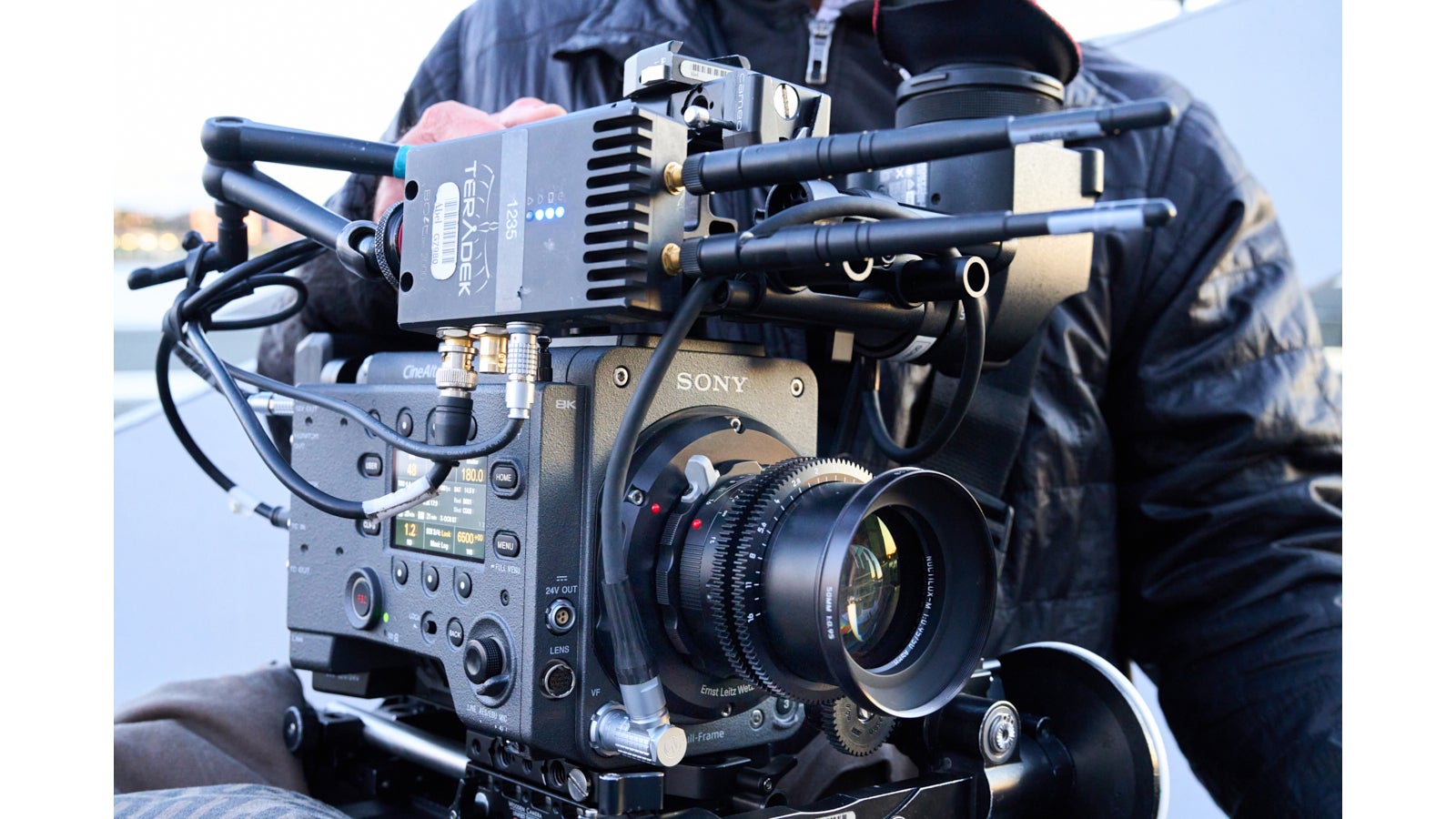
Gonzalo Amat, ASC with VENICE 2 on location in New York City. Photo by Jeff Berlin
SB:
What I hear you both saying is that whatever look we ultimately achieve when we first photograph it, we want to preserve detail both in the highlights and in the shadows to give the colorist the maximum flexibility in creating the look that is ultimately intended. But if you don't have detail, to begin with, even on the RAW register, there's no way it can be recovered if you lose it. So, you still want to fall within a certain range. Is that fair for both of you?
GA:
I would say so.
PW:
Definitely.
PW:
The only thing I was going to say about the HDR grade; those are becoming more interesting because of the way they reproduce highlights, really an entirely different and in some ways very appealing look.
SB:
How is the audience's reaction different in HDR than from standard dynamic range?
PW:
Well, just simply the intensity of it. So, if you're looking at a monitor that can go to 1000 nits, you're actually getting some highlight details around there. Really interesting.
SB:
Fascinating. So, let's talk about bad cameras. People are shooting their movies and TV shows on cameras of all sorts of qualities. I think for people to understand quality, first, they must understand what bad quality is. Without mentioning a product name, tell us some things about bad cameras and how they might affect the audience's experience with movies or TV shows?
GA:
If you want to tell the story in an immersive way, then the quality of the camera must be able to let you do that. A camera doesn't work for me if it means the color of the skin is going to be weird when it's not supposed to be or when you shoot an exterior day, it looks clipped, or if you have a noisy exterior night because a camera can't resolve darkness. If it's going to get in the way of the story, it's a deal-breaker because I want people immersed in the story, not just watching the story.
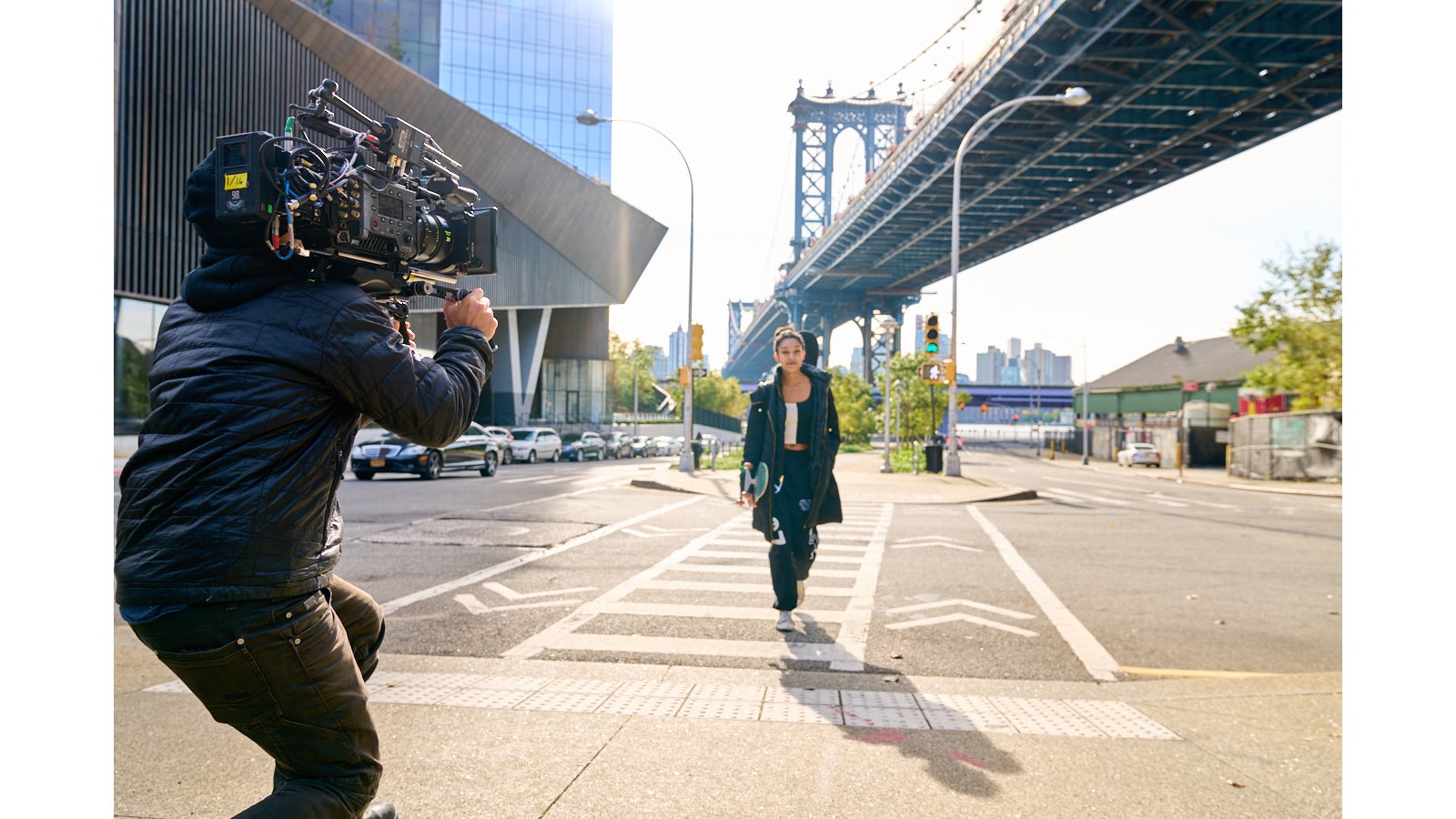
Gonzalo Amat, ASC with VENICE 2 on location in New York City. Photo by Jeff Berlin
SB:
What I love that you're saying is shadows can become noisy. Maybe some artifacting there as well.
GA:
Exactly.
SB:
If you're losing your highlights and your shadows have lots of noise in them, certainly there are things that Patrick can do to fix that to a certain degree. But once detail is lost in the highlights, there's no recovering it, right?
GA:
Yes.
SB:
And then you mentioned something about color and skin tones. Patrick, I'm sure you've had young DPs come in having shot things on terrible cameras, thinking it looks fantastic, and then you've got a technical challenge.
PW:
Yeah. It comes down to bit depth and dynamic range on the record side. Those two variables determine what we have in the file to work with. There are things in front of that: aesthetic choices like lenses and lighting. But on the acquisition side, bit depth makes a big difference, especially when looking at tonal reproduction.
You might have mixed formats where you're trying to match lower-bit depth cameras to higher-end bit depth cameras. We can get the actual balance and match it reasonably well, but you'll see the difference.
SB:
Explain to me what bit depth is?
PW:
The non-technical way to explain it is that higher bit depth means there will be more shades of color you can get in the image. So, at a lower bit depth, you'll see more steps and less color rendition. With a higher bit depth, you will get more tonal variation throughout the image. So, most high-end cameras these days can record gorgeous images that have a lot of flexibility in the DI. But on the prosumer side of cameras, you don't get that variation throughout the tones you're trying to perfect.

Photo Jeff Berlin
SB:
So, it provides so much that you can lock onto one thing and then play with it without affecting other things.
PW:
I would say so.
SB:
Different from resolution. I think people are very often confused between resolution and bit depth.
PW:
The two go hand in hand, but resolution will be the more pixels you have in the frame. So, if you're capturing 1080P, or UHD or 4k and now 8K, you're going to have more pixels to deal with in those different formats. Those have certain advantages in terms of posting an 8K image, as we have a lot more resolution to work with.
SB:
So high bit depth, high-resolution is ideal. What about different chip sizes? Is a bigger sensor size more advantageous?
GA:
This whole thing about the large format and focal length, is you can get great shallow focus. You have more space within the pixels, so you don't have noise in low light. I would say the bigger-sensor cameras are better in low light, which for me is a big reason to get a large format camera. I think large format is a little more cinematic than Super 35.
SB:
So large format is more like film?
GA:
I think so. I guess the perception of it does feel like there's more subtlety in the out of focus areas than on a Super 35 size sensor. And it's also gentler on the faces. So even though you have more pixels, it feels more analog in a way.

Gonzalo Amat, ASC with VENICE 2 on location in New York City. Photo by Jeff Berlin
SB:
So, you guys recently shot tests on the Sony VENICE 2. I'd love you guys to talk about that camera and your experience of the film you did. How it addresses the issues we've talked about, highlights, shadows, resolution, dynamic range. We didn't talk about it, but you may want to talk about this camera in terms of what we used to call ASA or ISO. The relative speed of the camera.
GA:
Yes. So, the idea of this test was I wanted to do it without any lights. I wanted to see what the camera could see in various locations in New York with some extreme conditions. I had shadows with bright buildings behind, interiors with bright windows or I was shooting at night or inside a studio with no lights. That was the idea, to see how the camera could resolve those things. And my experience with it was great.
I would say the latitude compared to the first version of the VENICE is better. Color rendition overall, especially skin tones, better, and more resolution, more latitude. So it allows you to capture an image so that you can play with it; the more information, more things you can do. In this particular test my intention was just to capture as much as I could with almost no tools. Because then if you can get a picture to look decent without tools, you know what you can do with the tools.
SB:
How much detail did you hold in the shadows and the highlights? So normally, the trick we would use is to add fill light to reduce the overall scene contrast to fall within a range. But you didn't do that.
GA:
I mean, of course, I would still expose for the highlights because that's what I would normally do anyway, but I wouldn't add any fill. And then when we did the color, if we needed to lift the shadows a little bit, we would do that. But I don't think that we ended up doing a lot of that. It had naturally nicer, soft shadows. And it didn't look noisy. So, I had very clean shadows, very clean highlights, and a very nice roll off of the highlights.
I had my subject, who is a singer, standing in front of the sparkly water, with the sun behind her. She was wearing a black jacket, and you could still see detail in the highlights, which was a reflection of the sun on the water. So yes, VENICE 2 is really well designed. And the upgrades to this camera really work.
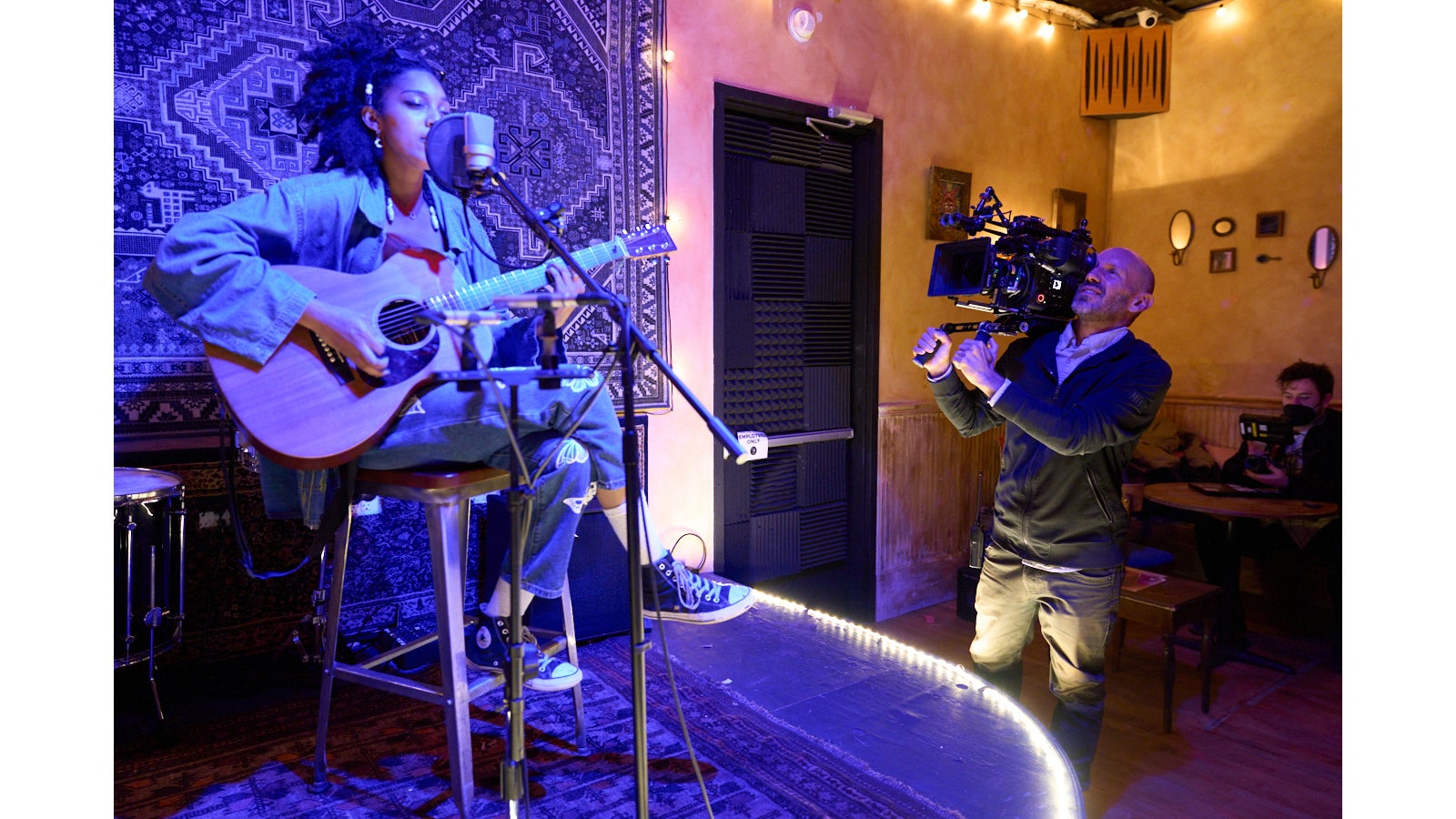
Gonzalo Amat, ASC with VENICE 2 on location in New York City. Photo by Jeff Berlin
SB:
What ISO are you shooting at generally? 800 or 3200?
GA:
I shot almost everything at 800, but then I tried the 3200 ASA for some interior spaces. We had this little performance in a bar, which I also shot with available light. So, I just wanted to try the higher ASA. Then also in the studio, where there were just a few small bulbs. I was impressed by the fact that it had almost no grain; it was very clean. So yes, it's versatile to shoot with that camera at night with no lights.
SB:
I'd love you to speak about skin tones because color science is a very complex subject. I think there's a presumption by many people who don't understand cameras and DI and DITs that it's all about resolution. But if the color science isn't right, you're never going to get the skin tone right. Is that fair?
PW:
I totally agree. If it's all about resolution, you can get a very electronic aesthetic. It's not necessarily just about resolution. It is about the tonal reproduction. The results of this test specifically highlight that. I mean, the skin tones throughout the piece are gorgeous. And I only had to do a light brush with the grade on this thing. It's all just how it was captured. So, hats off to Gonzalo because he nailed it.
SB:
So, without lighting for the most part, using 3200 ISO, not a lot of grain and skin tones were fairly accurate and didn't lose any details in the highlights or shadows?
PW:
Yes. That's where I think it holds up, even at the higher ASA, you still get that tonal variation. And visibly no noise in the image. So, it's not like we had to go in there on top of it and do some noise reduction to clean up the image, which is, in a sense, destroying some pixels. We didn't have to do that with the image captured in camera.
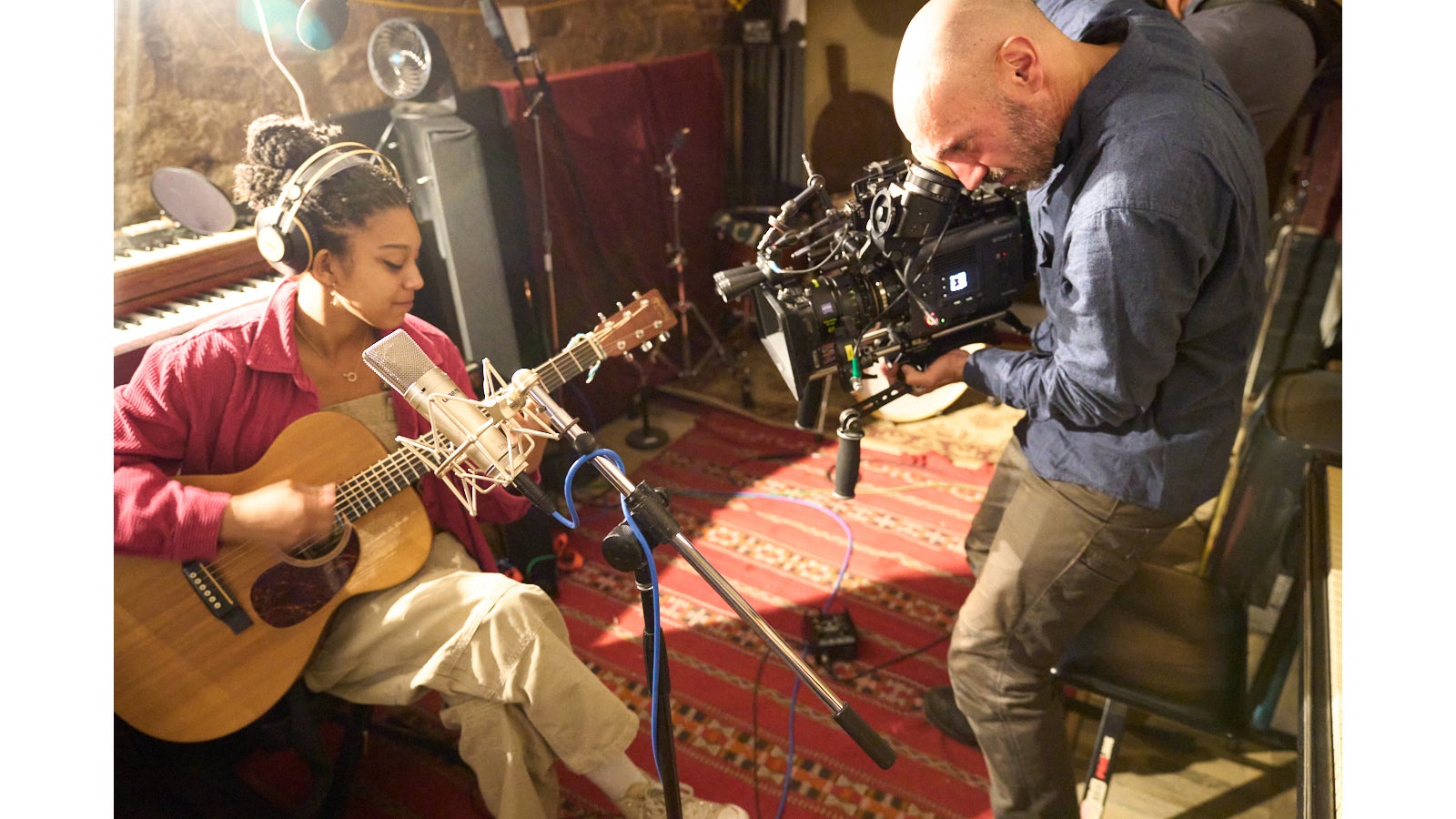
Gonzalo Amat, ASC with VENICE 2 on location in New York City. Photo by Jeff Berlin
SB:
Something else I think is important to discuss is the idea of an electronic image. Gonzalo, do you want to talk about the difference between an electronic image and a filmic image and why, from what you're saying your tests revealed the Sony produced a more filmic image?
GA:
As you say, people think more resolution will give you a more realistic reproduction of light, and in a way, it does. But I don't know that you want it to be as loyal to reality as you might think you want it to be. For me, especially if you're telling a story and it's all about faces and close-ups, I don't want to see too much detail on someone's face. I want to see the color, but I don't necessarily want to see pores. That filmic look, it's more like an analog look, more like an abstraction of reality.
For me, if you're shooting faces and people, people still have a very educated eye when it comes to the 24-frame shutter instead of the 60-frame shutter. So, people say, "Hey, it looks weird. It looks like a soap opera or something." But not with this camera. Even with an 8K resolution, it didn't bother me. I used no filtration. It has subtle colors and not excess resolution. I don't know if they did this, but it almost feels like they softened the red channel. I've tried other 8K cameras before, and I run away from them because I do not want to see pores on people's faces.
SB:
And Patrick, your experience when it came into the DI suite, having looked at other cameras, how did you feel about those qualities?
PW:
It was a great experience. Gonzalo and I discussed the aesthetic and execution. So, I took notes on that. And then, when I did apply the grade, I tried to be very light with it, very natural to honor the photography. And to be honest, those highlights, and shadows were there in camera. So just from that point on, I was just looking mainly at skin tone and then the visual style. So, like in certain shots, we erred a little more cool, desaturated, and then other shots, warm. I took those cues from Gonzalo and applied them. But, I mean, in terms of a file to work off, the camera felt great.

SB:
And not that electronic look that we're talking about. So, it isn't just about resolution. Even though it's an 8K image, it doesn't look like an 8K image. But the color science is really what determines a psychological quality. How audiences respond to the image and what they see as beautiful, what is aesthetically pleasing. And it isn't always the highest resolution. Is that a fair statement?
GA:
Yes. Absolutely.
PW:
Yes.
SB:
And yet, with the VENICE 2, we have that. Now, I was going to ask you, with 8K and file sizes. Talk to me a bit about each of them, and then we'll finish our talk about uncompressed file sizes, the size requirements, and what file sizes you guys prefer.
PW:
Well, I was interested because when we started the project knowing that it came off an 8K camera, I wondered would these files drop into the system I use, and would I have to change anything hardware-wise. And to its credit, it just works. So, I brought the native files in, monitored in UHD for the grade, and it felt very similar to how I work with more uncompressed, larger-sized files. And the good thing again, because we were talking about RAW, is that that data is always there for me. So, I took the exposure, the white balance, everything from what was done on the day. That’s it. But it is good to know that the data was there if an issue had arisen.
SB:
To be clear, when you create a film, you don't necessarily do it in full resolution because that can be quite slow, right? You produce uncompressed versions of the high-quality image, and you grade those, or did you grade these compressed?
PW:
We graded off of the native file, which is 8K. But there are very few 8K monitors on the market. So we all viewed it at 4k. But if we had to produce a master file, we could do it at the source resolution.

Photo Jeff Berlin
SB:
So, when you're working with 8K, let's say you've got several different layers that you want to work with. Does 8K, because of the file size, slow you down considerably when you're doing that? And if you do a full feature in 8K on the VENICE 2, would you have to transcode smaller versions of these files to work with and then do the download offline?
PW:
Well, particular to this project again because we weren't doing heavy windows, we weren't doing a lot of keying, I wouldn't say that I was pushing the system to evaluate what we would potentially do in a full DI. However, I would say that the native file type that VENICE 2 uses played really nice with the system. So again, just dropping it in and playing back, everything was done in real-time at full resolution. It's just output to the monitor at 4K versus 8K.
SB:
And how great to be able to do a DI at 8K.
PW:
I hear it'll be presented at some point in Los Angeles at 8K. I'm really interested in seeing it at that display level.
SB:
Guys, this has been great. Your test sounds fascinating. I hope to speak to you both again soon. Thank you, Gonzalo. Thank you, Patrick.
GA:
Thank you so much.
PW:
Thank you.




